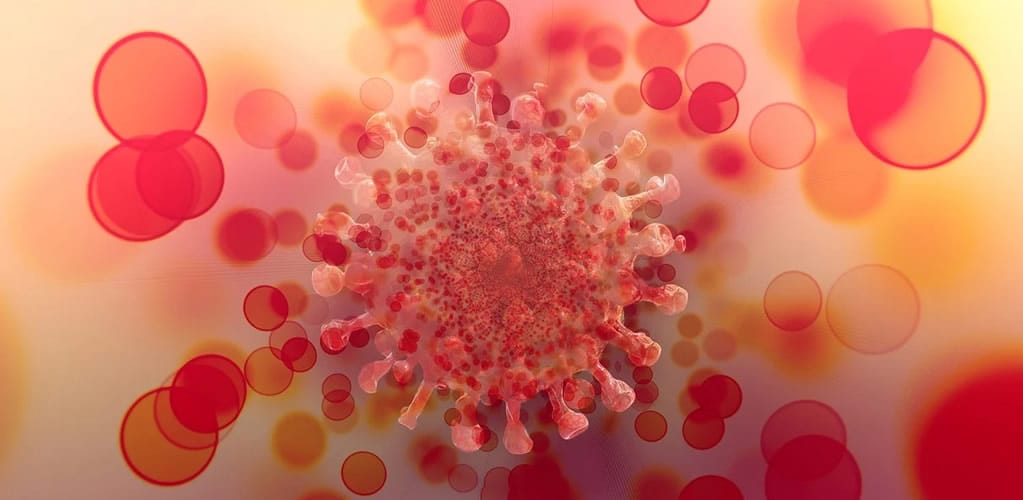Far too early to say we don’t need to worry about omicron and hospitalisations.
According to Chris Hopson, CEO of NHS Providers, if the current trajectory in COVID staff absences is maintained, pressure will grow significantly and even relatively small numbers of extra COVID cases will bring big difficulties to the NHS.

According to Chris Hopson, CEO of NHS Providers, if the current trajectory in COVID staff absences is maintained, pressure will grow significantly and even relatively small numbers of extra COVID cases will bring big difficulties to the NHS.

Chris Hopson, CEO of NHS Providers. | Sky News
In a series of tweets he posted a couple of days ago on Twitter, the chief executive of the membership organisation for all of England’s 217 ambulance, community, hospital and mental health trusts, explains how the NHS is doing at the moment in relation to omicron and other pressures:
“Trust leaders are looking at the data very carefully. The number of patients with COVID-19 in English hospitals is definitely rising, but not precipitately so. Numbers across the country as a whole have risen by 27% in a week – comparing figures for 27 December (released today) to 20 December.
“It is notable that we are now seeing growth in these numbers across the country, not just in London, as before. North West numbers up 38% in a week, East of England up 33% and Midlands up 23%. All comparing number of COVID hospital patients 20 to 27 December.
“London data, in particular, is important as it has been the clear epicentre of omicron up to now. The number of COVID-19 patients in London hospitals has grown by 45% from 20 December to 27 December. There is currently a 14 day doubling time (1,360 on 13 December to 2,640 on 27 December).
“And daily growth rates over the last week have been, from the 20 December, 9%, 5%, 7%, 3%, 8%, 7% and 9%. It is important to look at overall numbers as well as growth rates. 2,640 COVID-19 patients in London hospitals versus 7,917 in last January’s peak (18/01/21) – a third of that peak.
“Equivalent figures for England as a whole are 8,474 COVID patients in English hospitals today versus 34,336 in January peak (18/01/21) – 25% of that peak. So, whilst numbers are growing, we are currently some way from the number of hospitalised COVID patients in previous peaks.
“Talking to trust chief executives this morning, what is very interesting is how many are talking about the number of asymptomatic patients being admitted to hospital for other reasons and then testing positive for COVID. Some are describing this as ‘incidental covid’.
“Trusts are not, at moment, reporting large numbers of patients with severe COVID type respiratory problems needing critical care. They are also not needing to massively increase the use of oxygen. Both of which we saw in last January’s delta variant peak and very difficult critical care surge.
“We should, therefore, be cautious about over-interpreting current raw COVID admission data. As the COVID community infection rate rises rapidly due to omicron, we will get more cases of this type of incidental COVID-19 in hospital. Raw data doesn’t distinguish between the two.
“It is important to note that these cases will bring complications for hospital and community services as patients will need to be isolated to avoid cross-infection and they will add to the overall pressure. But these cases are, obviously, not the same as COVID-driven serious respiratory illness.
“In the words of one hospital chief executive in the South West this morning: “We have seen a 30% increase in COVID positive inpatient numbers compared to 7 days ago. But the largest proportion are incidental finding on admission, so COVID-19 is not the reason for admission.
“It is therefore important to look at the total number of patients admitted, not just the raw number of COVID patients admitted, particularly if they don’t need full COVID care. For our trust as a whole, overall admissions are no higher than they were seven days ago.”
“We must, though, keep the broader omicron context in mind. We still don’t know, and are unlikely to know for some time, whether we’ll see large numbers of seriously ill older people in hospital as omicron reaches older population and the effects of Christmas-mixing work through.
“Frustrating though it may be, we need more data before we can reach any firm conclusions on what the full risk from omicron is. It’s still far too early to say that we don’t need to worry about omicron and hospitalisations as some are unhelpfully saying and implying.
“It’s still far too early to say that we don’t need to worry about omicron and hospitalisations as some are unhelpfully saying and implying.”
“We must also remember that, as a whole, the NHS remains under huge pressure. Trust leaders are telling us that, whilst they can cope with current COVID caseloads, staff are at full stretch. Trusts also expect to come under greater pressure as they head into January.
“The current combination of staff absences, very busy urgent care pathway, planned care cases that can no longer be delayed and extending booster campaign all bring significant pressure. Right across GPs, social care, ambulances, mental health and community services.
“It is striking how many chief executives are saying that, on current evidence, they think omicron-related staff absences may be a greater challenge than the number of omicron-related severely ill patients they have to treat. Several trusts told me today they are now at a point where they need to redeploy staff to keep essential services going.
“If the current trajectory in COVID staff absences is maintained, these pressures will grow significantly. In this context, even relatively small numbers of extra COVID cases will bring big difficulties.
“Chief Executives are incredibly grateful for the commitment and professionalism of front line staff to cope with these pressures. At present, they are optimistic they can cope with the current caseload. But they are worried about what may be coming. Preparing for the worst but hoping for the best.”

— AUTHORS —▫ PMP News reporting. |
GET THEM INVOLVED: |
Sources
- Text: This piece was first published in PMP Magazine on 28 December 2021.
- Cover: Pixabay/geralt. (Licensed under a Creative Commons Attribution-ShareAlike 4.0 International License.)







[Read our Comments Guidelines]